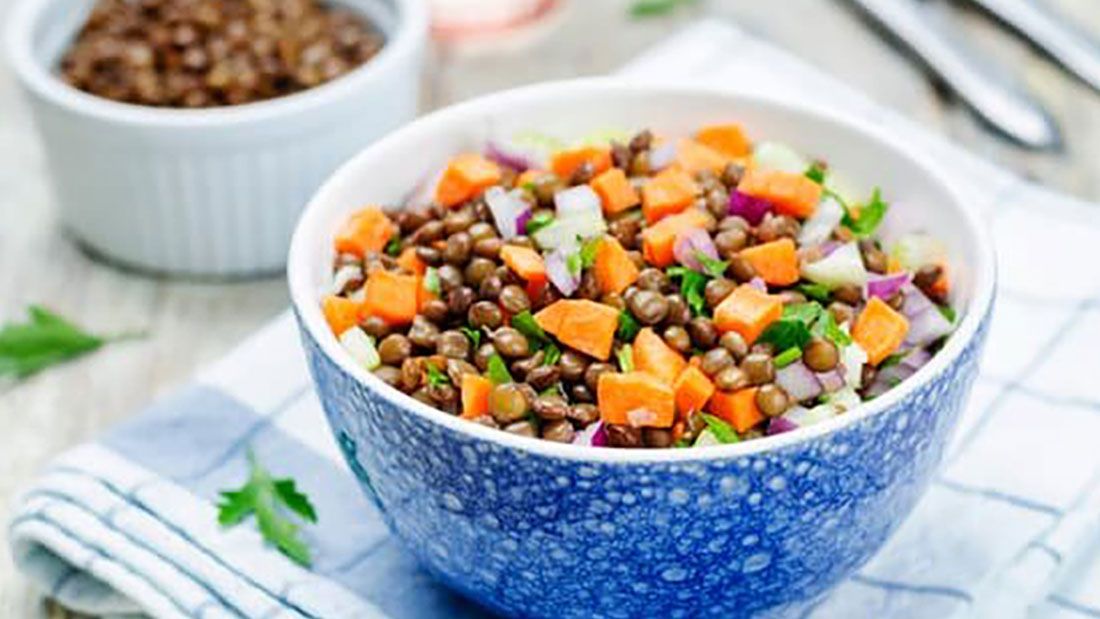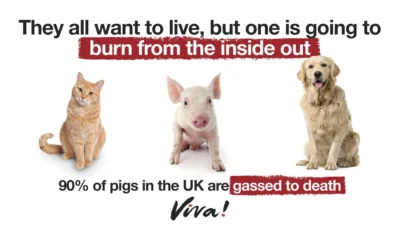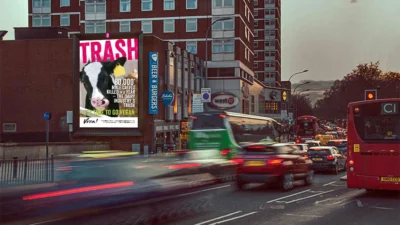Ironing out the Facts

“My body was telling me to eat meat!” is another of those old chestnuts. No it wasn’t, it was just a misguided notion that meat contains something missing from plant foods. The only things you’ll find in meat that are absent from plant foods are animal protein, cholesterol, hormones and high levels of saturated animal fat – none of which are desirable or beneficial to health.
It’s now increasingly accepted that appropriately planned vegan diets are nutritionally adequate for everyone, whatever their age or level of physical activity. Despite this, artificial concerns persist that certain nutrients might be lacking from a vegan diet – and iron is the one we hear again and again…
Yes, iron is an important mineral which your body uses to make haemoglobin in red blood cells and myoglobin in muscles and both these proteins carry oxygen to fuel your body. Without enough iron to make them, iron-deficiency anaemia may result, leaving you tired and short of breath. Iron also makes up parts of other proteins in the body and is important for normal growth and development.
How much do you need?
Women aged 19-50 need 14.8 milligrams per day and men (and women over 50) 8.7 milligrams per day. Women who lose a lot of blood during menstruation (heavy periods) may need supplements.
Are we getting enough?
Government surveys suggest that many people, especially girls and women, are falling short, regardless of their diet so obviously meat isn’t the magic provider we’re lead to believe. Symptoms of deficiency include tiredness, weakness, feeling cold, inability to concentrate, weakened immune system and anaemia.
Foods to include

Good sources of plant-based iron include:
Leafy green vegetables, especially kale and raw baby leaf spinach
Wholemeal bread, quinoa, wholewheat pasta and fortified breakfast cereals
Dried fruit, especially apricots and figs
Pulses such as lentils, peas, beans, chick peas and soya foods such as tofu
Pumpkin seeds, sesame seeds and tahini (sesame seed paste)
It’s also a myth that spinach contains exceptional levels of iron! The origins of this claim can be traced back to a mathematical error when a German chemist misplaced a decimal point, making the iron content of spinach seem 10 times higher than it really is! Popeye helped perpetuate the myth. However, steamed baby spinach still contains more iron per gram than a rump steak from a steakhouse!
Some herbs and spices contain considerable amounts of iron and even though they tend to be used sparingly, regular use will contribute to your overall intake. For example, three teaspoons of mixed herbs contain two milligrams of iron.
Top tips
Vitamin C helps you absorb iron. The amount of vitamin C in eight strawberries or a 200ml glass of orange juice can increase iron absorption three to four-fold. To boost your iron levels, combine vitamin C-containing foods with iron-rich meals – beans on toast with orange juice or a watercress salad with dates, pumpkin seeds and slices of fresh orange.
A substance called phytate found in pulses, grains and seeds can bind to iron and reduce absorption. Soaking pulses and discarding the water can help as can sprouting grains and seeds.
Do you need a supplement?
No, a varied, vegan diet rich in wholegrain foods, pulses, nuts, seeds and green leafy vegetables will cover your needs.
In 2016, one of the largest studies of vegetarians and vegans, the European Prospective Investigation into Cancer and Nutrition (EPIC) Oxford study, compared the diets of over 18,000 meat-eaters, 4,500 fish-eaters, 6,600 vegetarians and 800 vegans. They found that vegans had the highest intake of iron at just short of 20 milligrams a day, followed by vegetarians then fish-eaters with meat-eaters coming last. Yes, that’s right – vegans got more iron than meat-eaters!
This shouldn’t be a surprise as wholegrains foods, pulses, tofu, nuts and seeds all contain considerable amounts of iron that in many cases exceed those found in, for example, roasted pork belly or a leg of lamb. It’s a myth that people who avoid meat are missing out on iron and the American Dietetic Association say that iron-deficiency anaemia is no more common among vegetarians than meat-eaters.
There are, however, two types of iron.
- Haem iron – found in meat – is more readily absorbed but can accumulate in the body and cause damage, with high levels increasing the risk of heart disease.
- Non-haem (plant) iron – is absorbed according to your body’s needs and doesn’t build up in the body.
Detrimental effects of iron are related to haem iron specifically and not to non-haem iron. The mechanisms underlying these harmful effects are based on haem iron’s contribution to the formation of harmful molecules, such as free radicals and N-nitroso compounds (NOCs) that can damage cells in the colon and result in cancer.
Scientist suggest that NOCs formed in the gut as a result of consuming haem iron might explain the link between red meat and bowel cancer. Despite this, there is still a widespread conviction that iron from red meat is somehow superior to that from plant foods and it’s reinforced by some nutrition and dietetic textbooks.
Numerous studies show that people with high iron stores suffer a greater incidence of heart disease, diabetes and certain cancers. The iron in supplements is more readily absorbed than iron from plant foods. Taking over 20 milligrams may cause constipation, nausea, vomiting and stomach pain. Very high doses can be toxic, especially for children so if you have supplements at home, keep them in a safe place.
In summary, a varied vegan diet will provide all the iron you need and don’t let anyone tell you otherwise!
To find out more about iron see our A-Z of Nutrients
This article originally appeared on Viva! Health.




